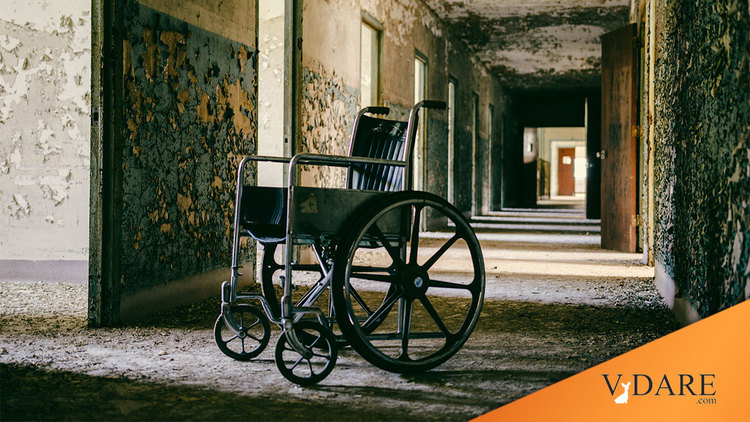


By Steve Sailer
10/10/2022
Earlier: Why L.A. Used To Not Have Many Homeless People: Camarillo State Mental Hospital
Ever since the first half of 2020, when pandemic fears and the racial reckoning led to the releasing of prisoners and the decline of policing, dangerous lunatics have been running amok. This has led to calls to finally rebuild the asylum system that long ago removed vicious crazy men from the streets.
One of the many reformers to come out of Massachusetts in the 1840s was Dorothea Dix. She made her cause better treatment of lunatics, the triumph of which led to the construction of publicly funded insane asylums, typically in restful surroundings.
For example, Los Angeles’s mentally ill were served by the Camarillo State Mental Hospital in a serene location in a superb climate a few miles from the Pacific. After his 1946 drug freakout led to him spending six months at Camarillo, Charlie Parker did not at all appreciate his record company naming his comeback track “Relaxin’ at Camarillo.” But still…
It’s now the fine campus of Cal State Channel Islands.

Building insane asylums was seen for a century as a major step forward.
But eventually the 19th century buildings on the East Coast wore out.
Rather than upgrade them or replace them with steel and glass buildings in the modern style, it was decided by progressive opinion over the course of the 1960s that the problem was not that some percentage of the population would always be dangerous crazy men but that society was trying to corral the dangerous crazy men. The New York Times editorial board explains yesterday that THEY WEREN’T WRONG!
Dr. Steven Sharfstein remembers the Boston State Hospital in Mattapan, a creaking 19th-century building where he and his fellow psychiatry residents were forced to send their most intractable patients.
“It was a terrible place,” says Dr. Sharfstein, who served as president of the American Psychiatric Association. “The lights didn’t always work, the patients wandered around like zombies. Nobody got better.”
Eventually, he and his fellow residents banded together and refused to go. Move the patients back to central Boston, they insisted, and treat them at the community mental health center. Their small protest was part of a growing movement to close state psychiatric hospitals across the nation and replace them with community-based care.
Those hospitals had also arisen from a movement: In the mid-1800s, after visiting hundreds of almshouses, jails and hospitals and seeing the horrid conditions that most people with mental illnesses lived in, the reformer Dorothea Dix begged health officials to create asylums where those patients could be treated more humanely. The first such facilities were small, designed for short-term, therapeutic care, and functioned more or less as Dix had hoped they would. But as local officials began foisting more of their indigent populations onto the states, they morphed into human warehouses. By the time Dr. Sharfstein started his career, most of them held upward of 3,000 patients, often for years at a time.
Advocates of a community-based approach argued that even the sickest psychiatric patients deserved to live in or near their own communities, that they should be cared for in the least restrictive settings possible and that with the right treatment (humane, respectful, evidence-based) the vast majority of them could recover and even thrive.
Well… that didn’t happen.
But that’s not the point.
Instead, the point is that more money should be poured down the rathole of a failed 1960s theory because to not do that would be to admit that the theories of our ancestors 60 years ago turned out to be wrong.